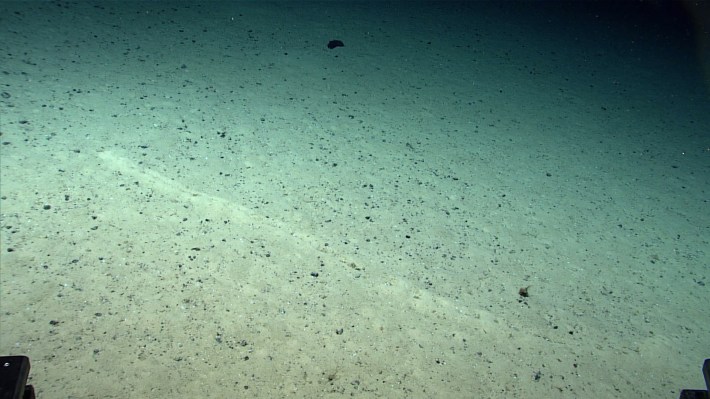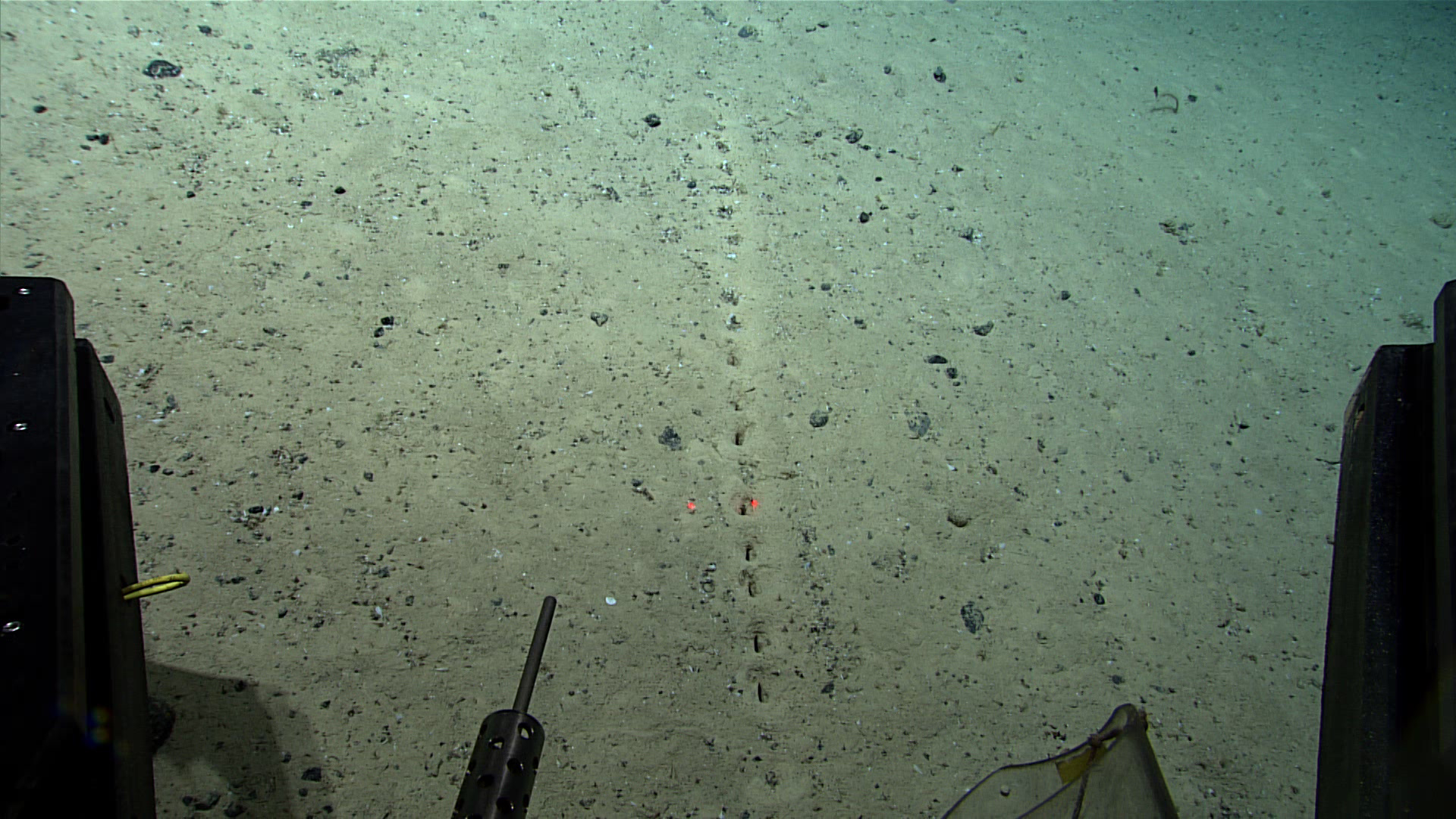On Friday, the National Oceanic and Atmospheric Administration's remotely operated Okeanos explorer plunged into waters north of the Azores and descended about 1.6 miles to hover just above a line of mystifyingly rectangular holes perforating the seafloor. It looked like someone had pressed a toothy comb into the silky mud and lifted it out perfectly. Or it looked, as the New York Post compulsively reported, like aliens.
When NOAA consulted Twitter and Facebook for the layperson's hole hypothesis, a clarion call for Online Guys Who Have Theories For Everything, they received many theories, including but not limited to: worms, clams, aliens, volcanic activity, concrete slabs, "some type of crab maybe," "a rectangular crab" specifically, Genesis 7:11, transatlantic fiber optic cables, and "lizard people camping inside the hollow Earth."
Although the holes looked eerie, they were not unfamiliar to Okeanos, which had glimpsed dozens of them nearly a week earlier on a July 23 dive about 300 miles away. Still, the scientists commenting over the Okeanos livestream marveled at the sheer chances of happening to drop the ROV straight above the holes, which were spaced about 4 to 4.7 inches apart. "It's remarkable that you landed on them today," said Mike Vecchione, a NOAA deep-sea biologist, over the livestream (he'd called in to weigh in on the holes).
Vecchione may know more about these kinds of holes than almost any other scientist, which is to say, still not very much. He and Odd Aksel Bergstad, then a researcher at the Institute of Marine Research in Bergen, Norway, had published a paper investigating another set of these holes in the journal Frontiers in Marine Science. Vecchione and Bergstad deemed the holes lebensspuren, German for "life traces," referring to the tracks organisms leave behind in sediment.

Not all lebensspuren are holes. As animals go about their days, they leave behind prints, trails, borings, and more. Some are easier to decipher. Acorn worms excrete spiraling, froyo-like fecal casts, and sea spiders leave remarkably spider-like imprints of their legs in the sand.
The regularity, evenness, and quadrilateral shape of these particular lebensspuren might seem to suggest the holes came from something human-made. Rectangles have distinctly human vibes, according to my gut. But animals are often more capable than us of remarkable symmetry; male white-spotted pufferfish laboriously carve out striking, six-feet-wide sandy mandalas to impress a mate (and this blogger!) And according to Vecchione, the signs are not compatible with a human origin of these holes. "For something manmade to cause such a pattern would require a tightly controlled pogo-stick motion with no rotation," he said in an email. "There is also no indication of anything dragging across the bottom between or alongside the rows."
When Vecchione first encountered the holes, he speculated they may have come from a bottom-dwelling animal periodically poking down into the mud to feed, almost like a shorebird. But as he and Bergstad investigated of the holes, they found reports of similar holes dating back hundreds of millions of years ago to the Paleozoic—a trace fossil called Paleomeandron, which scientists interpreted as a system of burrows with vertical chimney-like shafts appearing at the surface of the sediment as a series of paired holes.

Vecchione observed the new batch of mysterious holes seemed fresher at one end and older at the other, with detritus and sediments filling in the carved-out chimneys—"indicating possibly substantial elapsed time from beginning to end," he said. He noted that in some places, the rows cross. "Although sometimes the paths continue in both directions, in most cases a crossing line stopes abruptly when it touches another line," Vecchione said. (The Okeanos researchers also noted a cnidarian polyp had seemingly drifted into a hole by accident.)
In Vecchione's eyes, the most parsimonious explanation for the holes is that they are the result of an animal burrowing through the seafloor and occasionally punching up chimneys to irrigate the burrow with fresh seawater. "The apparent habitat of such a beast appears to be flat, heavily sedimented areas on the ridge" at depths just under a mile to 1.5 miles undersea, he said. With Vecchione's blessing, the Okeanos pilots slurped up a sample of sediment in the freshest-looking hole. If any parts or traces of the creature that made them were slurped up in the sample, they will be revealed at the unboxing of the hole-water—much grittier than holy water, but perhaps more sanitary.
But if nothing turns up in the sample, when deep-sea technology catches up with the wildest dreams of human ambition, I volunteer to stick my hand into the sea holes. I will stick my hand in the freshest hole first, and then subsequently in every other hole if I fail to seize the burrower on the first try. I would then put the beast back into their hole and apologize for so rudely intruding into their beautiful home—so mysterious, so freshly rectangular!—and then return to the surface triumphant, I who grabbed the burrowing hole beast with fingers wasted by blogging: a hero of our modern times.






